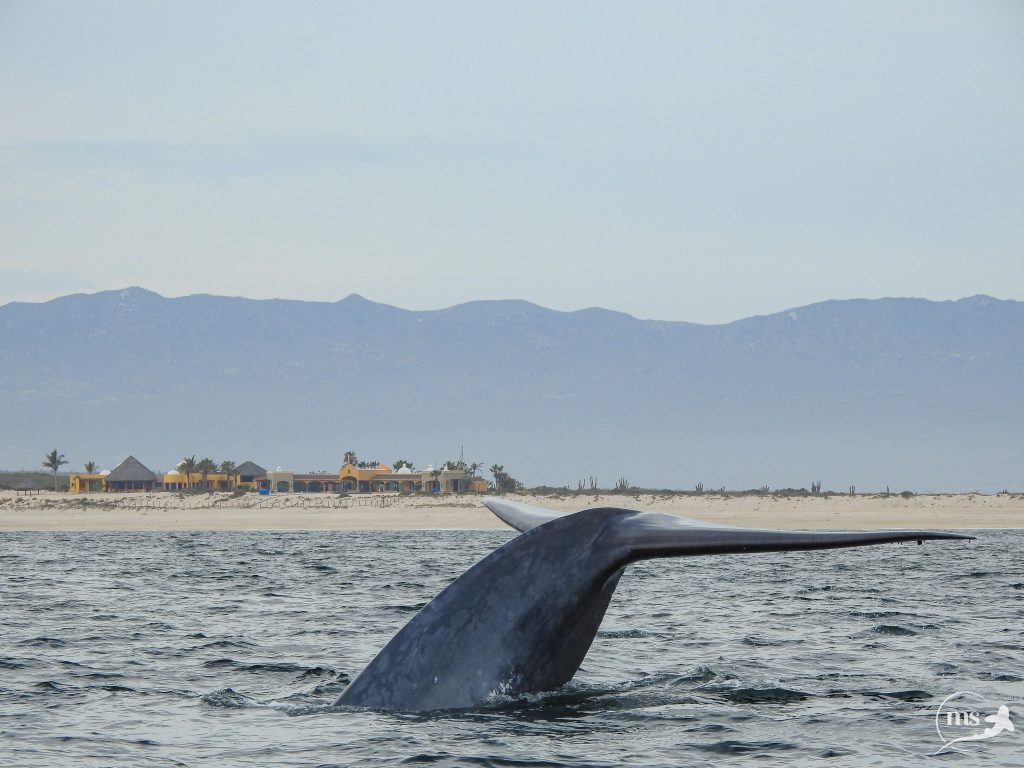
Just a few days ago we had an incredible encounter: while out on a boat, we found not one, but two blue whales in our bay. We were observing a humpback whale when suddenly, we heard a very loud blow close to our boat: there it was, a gigantic creature just at our doorstep. The sound of a blue whale´s breath is incredible, it is so loud it gets inside your chest, no doubt a powerful feeling to hear one close by.
Blue whales are the largest animal known to have ever existed. They can live up to 80 or 90 years and reach a maximum length of 30m (98 ft) and weigh up to 200 tons. Their heart is the size of a car! They perform long migrations, traveling from their summer feeding grounds in the polar regions to their winter breeding grounds in waters near the tropics.
Despite their size, much of their life story remains a mystery. They are generally solitary or gather in small groups, mothers with their calves being the most common aggregation. They migrate during winter and spring to the Gulf of California for feeding and breeding. In Loreto area, females with their newborn calves have been observed.
They are baleen whales, meaning they do not have teeth, but baleen plates that they use to filter their food. Their diet consists almost exclusively of krill. Their stomach can hold one ton of krill and they need to eat about 4 tons of krill each day.
Blue whales produce some of the loudest and lowest frequency vocalizations in the animal kingdom, and their inner ears appear well adapted for detecting low-frequency sounds. They emit a series of pulses, groans, and moans, and it’s thought that, in good conditions, blue whales can hear each other up to 1000 miles away. Scientists think they use these vocalizations not only to communicate but, along with their excellent hearing, to sonar-navigate the lightless ocean depths.
Like other whale species, they were abundant in nearly all the Earth´s oceans, until the 19th century, when they were hunted almost to extinction. The International Whaling Commission banned blue whale hunting in 1966, but they’ve managed only a minor recovery since then. Today they are listed as Endangered and face man-made threats such as ship strikes, pollution, ocean noise, and climate change.